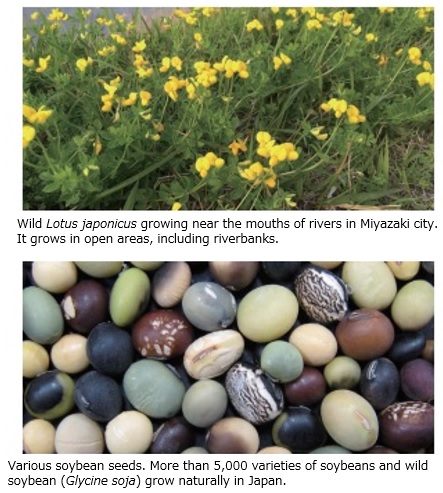
- Core Center:Faculty of Regional Innovation, University of Miyazaki University of Miyazaki
- Principal Investigator:Masatsugu Hashiguchi
- FAX:+81-985-58-7257
- Sub-Core Center 1:Graduate School of Life Sciences, Tohoku University
概要Overview

Lotus japonicus is a wild legume that grows naturally in Japan and is widely used as a model legume in basic research. This is because the plant is easy to grow and has a short life cycle (about 3 months) and small genome, the sequence of which has been determined and made publicly available. Glycine max is widely used around the world as food, feed, and a high-value cash crop, because its seeds contain many functional components such as isoflavones and saponins, in addition to proteins and lipids.
Stock
・Experimental lines of L. japonicus: 3 lines
・Japanese wild accessions: about 1,000 lines
・Recombinant inbred lines and taglines: about 1,600 lines
・DNA clones (including Rhizobium): about 240,000 clones
・Rhizobium STM mutant strains: about 7,000 lines
Subjects in the NBRP programs related to “Lotus japonicus & Glycine max“
【 Value addition subprogram/ Genome Information Upgrading Program 】
| FY2015 | Generation of high quality genome sequence of Gifu accession of Lotus japonicus to accelerate NBRP resource application |
| FY2014 | Resequencing of the NBRP collected resources intended to upgrade the genome information of Lotus japonicus |
| FY2005-FY2006 | Genome Information Upgrading Program : FY2002-FY2006 |
